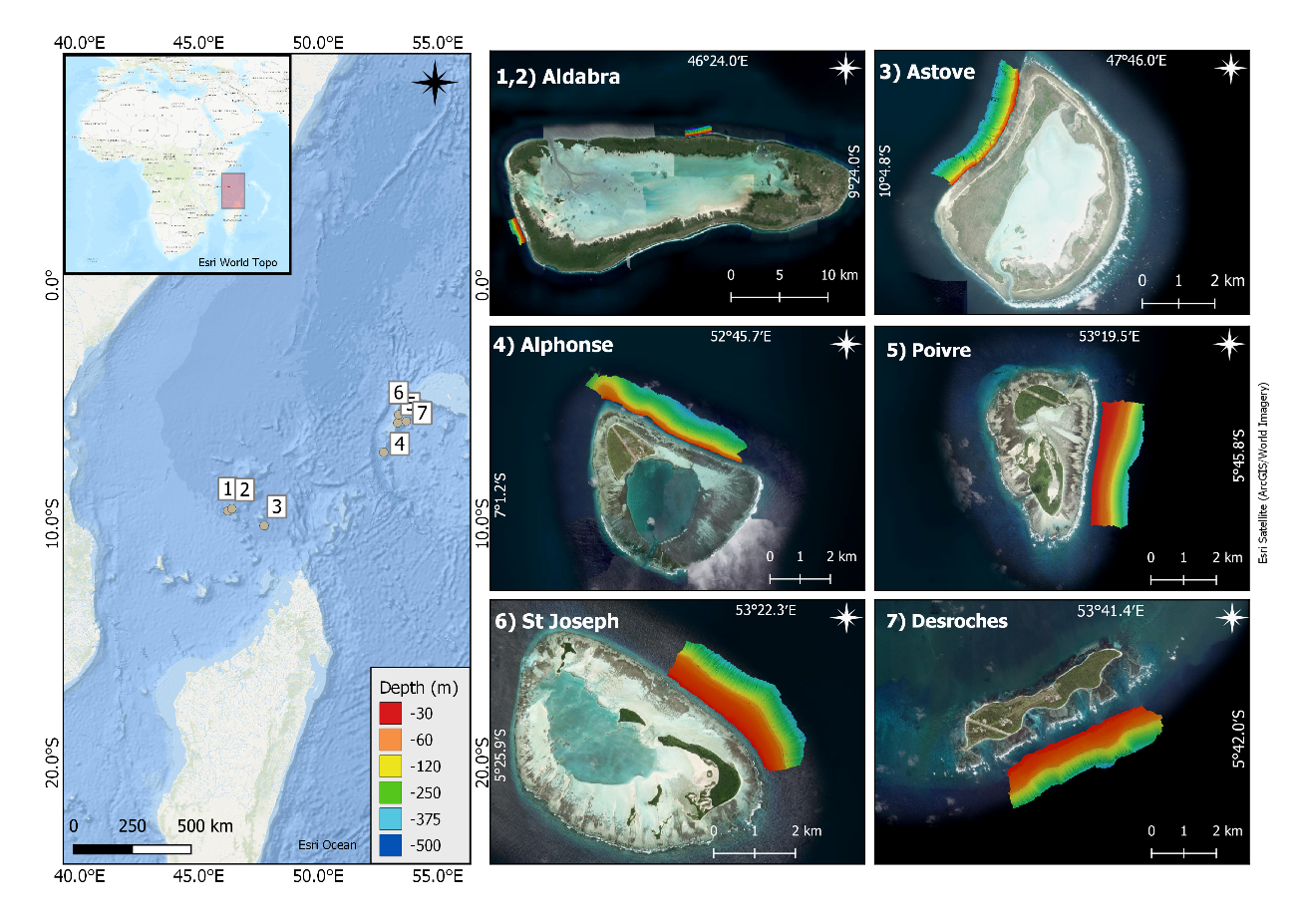
Effective Protections for Seychelles’ Safeguarded Waters
Seychelles Gorgonian Coral at 60 meters— Photo Credit: Nekton
New research fills critical knowledge gap on deep reef habitats
By Daniel Wagner, Blue Nature Alliance; Nico Fassbender, Paris Stefanoudis, Lucy Woodall, and Sheena Talma, all Nekton
We cannot protect what we don’t understand. The network of 13 marine protected areas (MPAs) in Seychelles, established in 2020, covers over 410,000 square kilometers (~158,000 square miles) – roughly the equivalent size of California’s landmass. These types of protected areas provide a powerful tool for conserving – and restoring – marine ecosystems. Ultimately, the success of such protected areas depends on a robust understanding of the ecosystems they intend to protect. That way adverse shifts in conditions can be identified and addressed.
Submersibles conducting deep reef surveys during 2019 expedition to Seychelles. — © Nekton
The Seychelles Archipelago encompasses 115 islands. In 2019, Nekton, a Blue Nature Alliance partner, joined with the Seychelles government on a 50-day at-sea expedition to study previously unexplored deep-water reefs off Seychelles’ Outer Islands. The endeavor revealed a wide range of colorful reef species such as algae, sea stars, sea cucumbers, sponges, and corals, in addition to a yet-to-be-identified lettuce-like green sponge photographed at 120 meters off the Seychelles Outer Island of Aldabra which may prove to be a previously undescribed species.
Map showing the locations off Seychelles’ Outer Islands that were surveyed as part of the study. - © Nekton
The study also observed a species of black coral, photographed at 250 meters off the Seychelles Outer Island of Alphonse, which is one of the longest-living organisms known on Earth with maximum lifespans of several millennia.
Black coral photographed at 250 meters during the 2019 expedition to Seychelles. — © Nekton
Since the expedition, scientists have gone on to compare samples to those previously archived. In the recent peer-reviewed study published in the Biodiversity Data Journal, an astonishing 184 distinct organisms were identified living on the seafloor.
Overview of various habitats and depths explored as part of the study. — © Nekton
The findings created the first biodiversity catalog of deep reefs within Seychelles’ MPA network, thereby providing critical baseline information to guide future management efforts throughout the region and supports the government’s commitment to protecting the area.
Delivering conservation benefits from protected waters depends on understanding and managing these marine ecosystems, and studies like this are helping to fill the knowledge gap. The study was led by scientists from Nekton and included co-authors representing 16 institutions from seven countries, including the Blue Nature Alliance.





